In 1979, when the renowned American sociologist William (Holly) Whyte published The Social Life of Small Urban Spaces — which is, let’s face it, a love letter to New York — he was training his gaze on a city that had been through the ringer.
After decades of Robert Moses’ mega-project megalomania, Greenwich Village had only just narrowly escaped his bulldozers. The South Bronx was on fire. The subways were a stinking mess. Crime had spiked. Muggers lurked in Central Park. And even as the city teetered on the brink of insolvency, Gerald Ford famously shot down then Mayor Ed Koch’s plea for a bailout.
Yet amidst the chaos, something was germinating. Night clubs and artists’ lofts were colonizing the abandoned warehouses of lower Manhattan. Hit musicals were drawing audiences back to the Great White Way. And a new marketing slogan, “I ❤ New York,” revealed, at least initially, something about the affection New Yorkers felt for their bedraggled home.
Perhaps sensing a change in the urban zeitgeist, Whyte and his researchers took their clipboards and video-cameras to a handful of Manhattan public spaces and set to work documenting the ways in which New Yorkers used New York — where on the sidewalk they stopped to speak to one another, how and where they sat for lunch, what caught their attention as they moved down busy sidewalks.
Arguably the most far-reaching observation in Social Life is also the most quotidian: “People,” Whyte wrote, “tend to sit most where there are places to sit.”
Allowing that his adage may not be “a bombshell,” Whyte went on to parse what makes for a good place to sit in public space — seat backs, comfort, armrests, etc. But seating, he added, “should be socially comfortable [emphasis added].”
In other words, lots of options — stairs, ledges, benches, etc. — as well as moveable chairs, which “enlarge choice.” “To move into the sun, out of it, to make room for groups, move away from them. The possibility of choice is as important as the exercise of it. If you know you can move if you want to, you feel more comfortable staying put (pp 34-35).”
New York today bursts with the energy that flowered from Whyte’s words. After former mayor Michael Bloomberg empowered his transportation commissioner Janet Sadik-Khan to fully or partially close hundreds of city blocks and fill them with thousands of simple folding chairs and tables, New York’s public spaces exploded with the vitality that surfaces when people reclaim pavement from the zealous dominion of the automobile.
Those chairs and tables, by the way, are now everywhere, including parks. And despite the crowds, there always seem to be lots of unoccupied ones — a testament to New York’s rejection of stinginess as a design principle. This kind of seating is plentiful in cities like Paris, London, and Boston. Jan Gehl, the high priest of public space and an advisor to Sadik-Khan, has been advocating moveable chairs for years, as have advocacy groups like the venerable Project for Public Spaces.
Some cities, of course, provide extensive public seating in their parks — Mexico City, Madrid, Montreal — and so there’s less need to augment the existing street furniture.
With the exception of a couple of bespoke parks that have been (re-)designed primarily with tourists in mind — Berczy or the recently opened Love Park — Toronto doesn’t do moveable anything. Park benches and picnic tables are mostly bolted or shackled in place, and there are, as everyone who uses public space in Toronto knows, not nearly enough of them. Some BIAs set out a few of those fake Muskoka chairs to add a splash of colour to a corner, but these cumbersome objects don’t exactly invite re-arranging.
So as we roll towards July, I’ll pose the eternal question (and hopefully Mayor Olivia Chow is listening): Why, in the face of overwhelming evidence to the contrary, is Toronto so parsimonious with the provision of pedestrian-grade seating in our public parks and squares?
For clarity, I’m not talking about the ones we show to company. What about on Toronto Island (which we’re not supposed to visit because, to quote Yogi Berra, it’s so crowded no one goes there anymore)? Trinity Bellwoods? High Park? David Pecaut Square? Rosehill Reservoir? Or the sprawling suburban parks filled to the brim on summer weekends with extended families, many of them newcomers, who bring grills and tents and coolers and, of necessity, their own Canadian Tire folding chairs because, well, there are no chairs…
I do actually know the answer: because to do so will (pick any of the following) wrest control from the Parks department; invite, ahem, undesirable activity; and trigger the spending of public money on public space, which we absolutely can’t tolerate.
Spacing has spilled plenty of digital ink on the subject of improving the design, placement and configuration of Toronto’s park benches. The City’s response has always been lugubrious (see previous paragraph), and the ensuing civic conversations rarely lead to improvements, beyond the aforementioned showcase parks, which are intended to leave tourists with the (incorrect) impression that we are way more cosmopolitan than we actually are.
Instead, we burrow into very deep rabbit holes, at the ends of which are warrens of circular debates about accessible design, hostile design, high-concept design and, well, cost.
It seems to me that if Toronto council can get its head around drinking in the parks and opening park bathrooms, it should be able to muddle through what is an incredibly easy fix without resorting to all the usual bureaucratic foreplay of consultations and pilot projects and surveys.
The City could simply buy a whole lot of those cheap and cheerful folding chairs and tables, and then leave them in public places, with the proviso that Parks department staffers cable them up at night and unfold them in the morning. Maybe a few will get palmed or broken, but almost certainly many more will not only get used; they’ll invite others to partake of the city’s extensive park network.
Over two generations ago, in a city struggling to extricate itself from a depressing funk, William Whyte told New York officials to have a little faith in the choices that ordinary city-dwellers made.
With Summer, 2024, upon us, the evergreen question Toronto and its public-spirited mayor faces is not “how,” but rather “why not?”

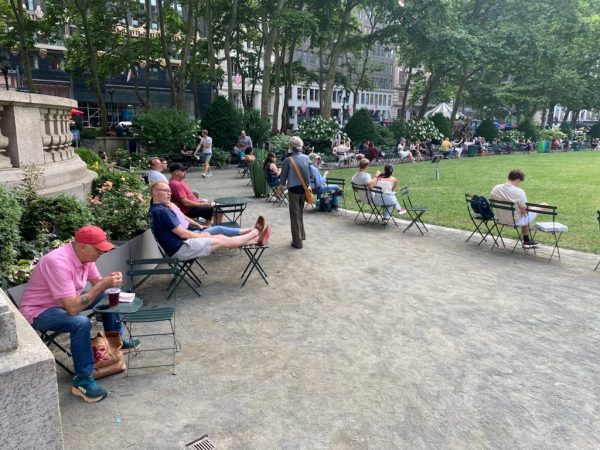

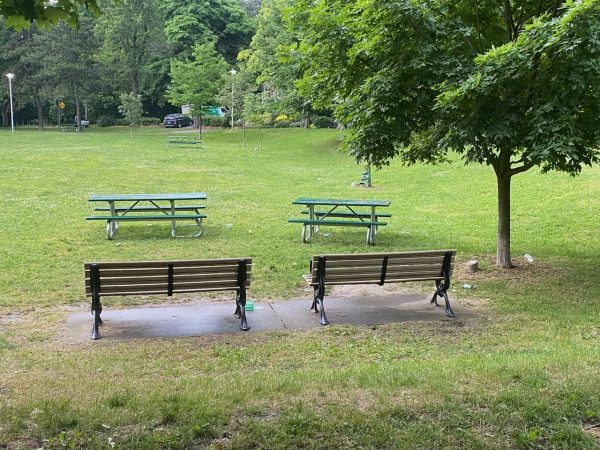
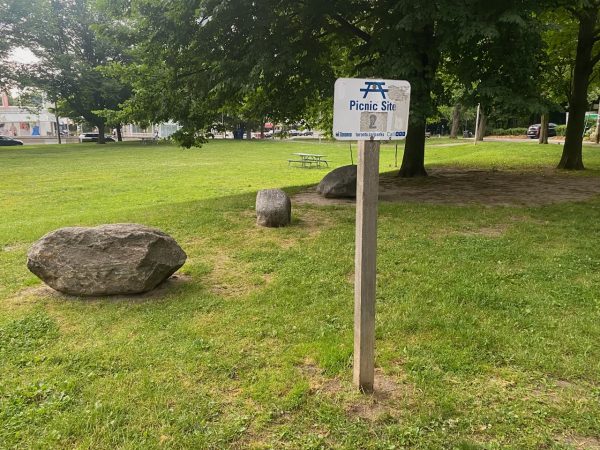
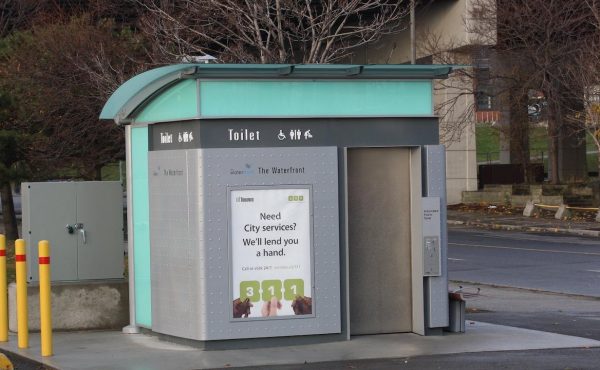

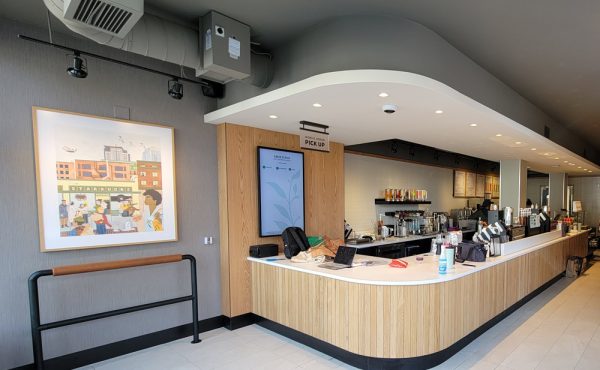
2 comments
I don’t think Toronto city hall sees citizens as customers but mere adversaries. Seating public washrooms beat cops garbage cans that function park maintenance are seen as line items on a statement rather than making Toronto a livable city
It’s interesting that the “I Love New York” logo and slogan were devised as an ad campaign by and for the State of New York, not New York City, yet most of us associate it with the city.